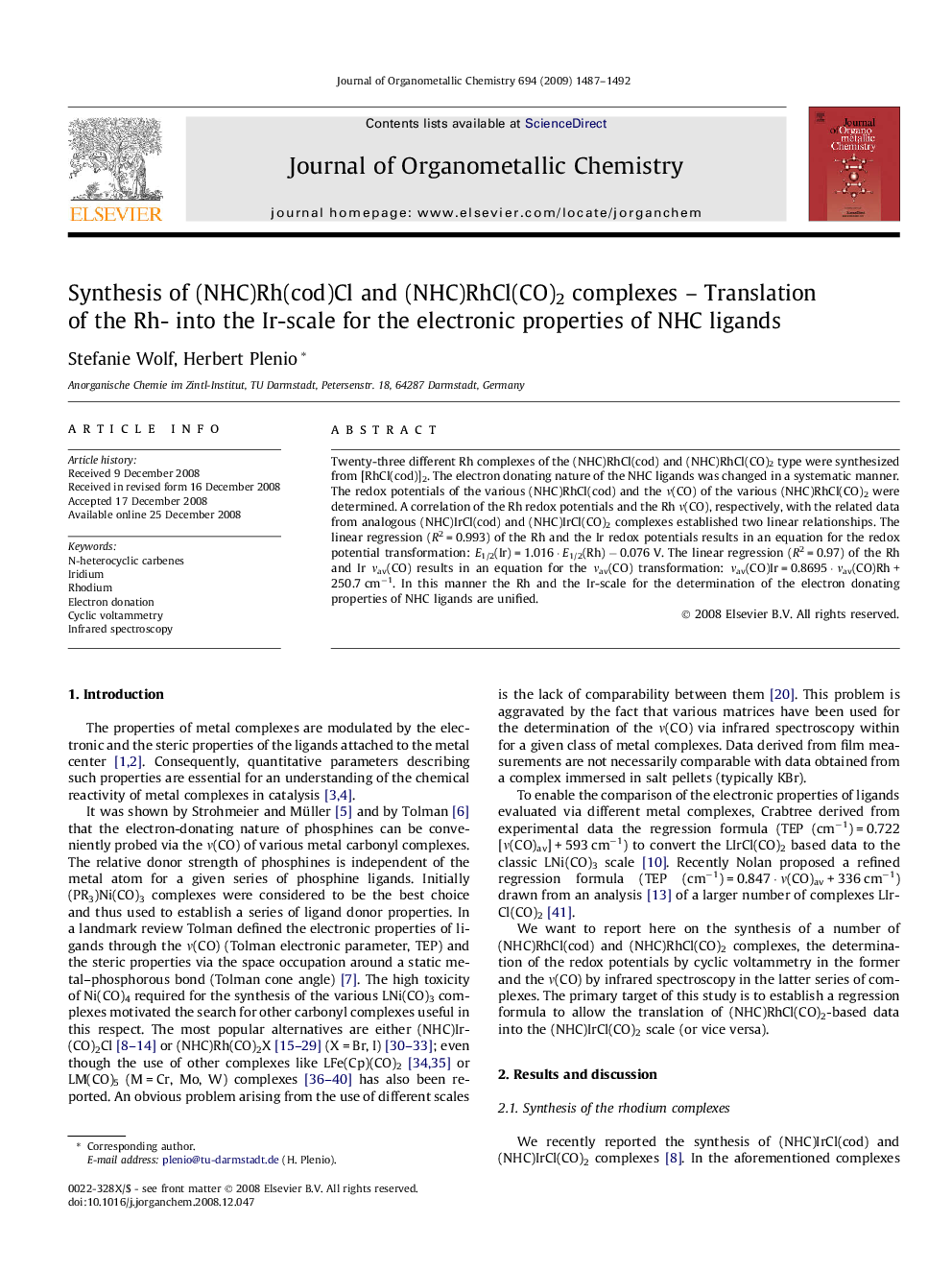| Article ID | Journal | Published Year | Pages | File Type |
|---|---|---|---|---|
| 1325271 | Journal of Organometallic Chemistry | 2009 | 6 Pages |
Twenty-three different Rh complexes of the (NHC)RhCl(cod) and (NHC)RhCl(CO)2 type were synthesized from [RhCl(cod)]2. The electron donating nature of the NHC ligands was changed in a systematic manner. The redox potentials of the various (NHC)RhCl(cod) and the ν(CO) of the various (NHC)RhCl(CO)2 were determined. A correlation of the Rh redox potentials and the Rh ν(CO), respectively, with the related data from analogous (NHC)IrCl(cod) and (NHC)IrCl(CO)2 complexes established two linear relationships. The linear regression (R2 = 0.993) of the Rh and the Ir redox potentials results in an equation for the redox potential transformation: E1/2(Ir) = 1.016 · E1/2(Rh) − 0.076 V. The linear regression (R2 = 0.97) of the Rh and Ir νav(CO) results in an equation for the νav(CO) transformation: νav(CO)Ir = 0.8695 · νav(CO)Rh + 250.7 cm−1. In this manner the Rh and the Ir-scale for the determination of the electron donating properties of NHC ligands are unified.
Graphical abstractLRhCl(CO)2 and LIrCl(CO)2 have been used to quantify the electron donating properties of ligands via the respective ν(CO) frequencies (Rh- and Ir-scale). Following the synthesis of (NHC)RhCl(CO)2 and (NHC)IrCl(CO)2 complexes and the carbonyl frequency determination, it is now possible to convert the Rh- into the Ir-scale and vice versa.Figure optionsDownload full-size imageDownload as PowerPoint slide
